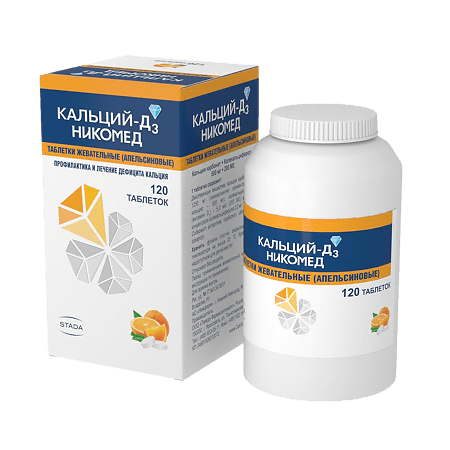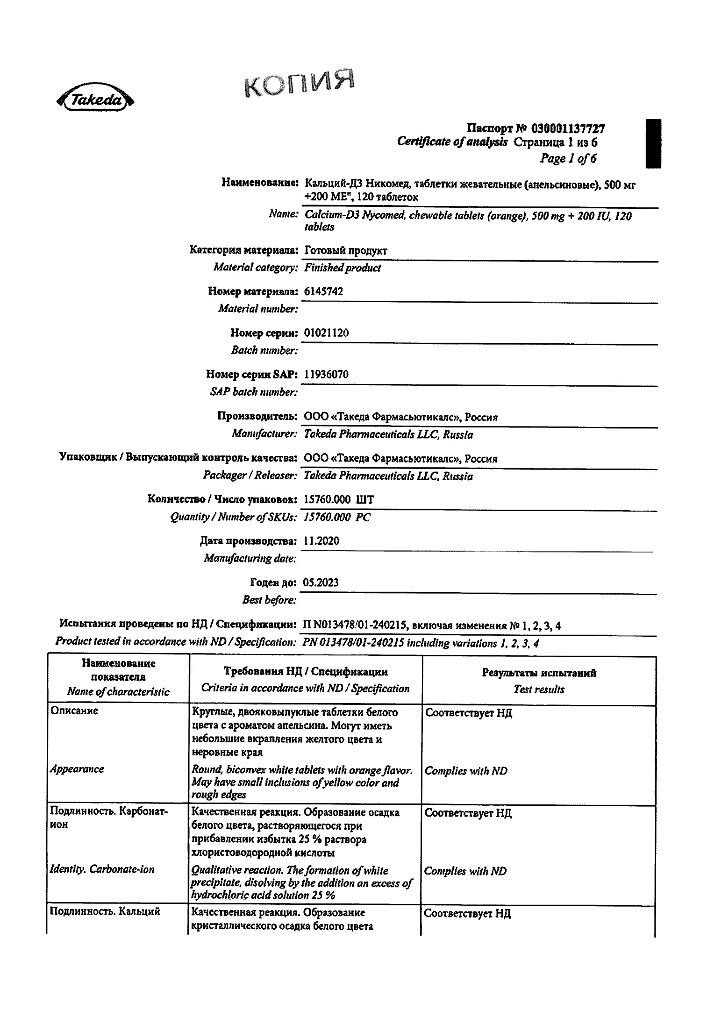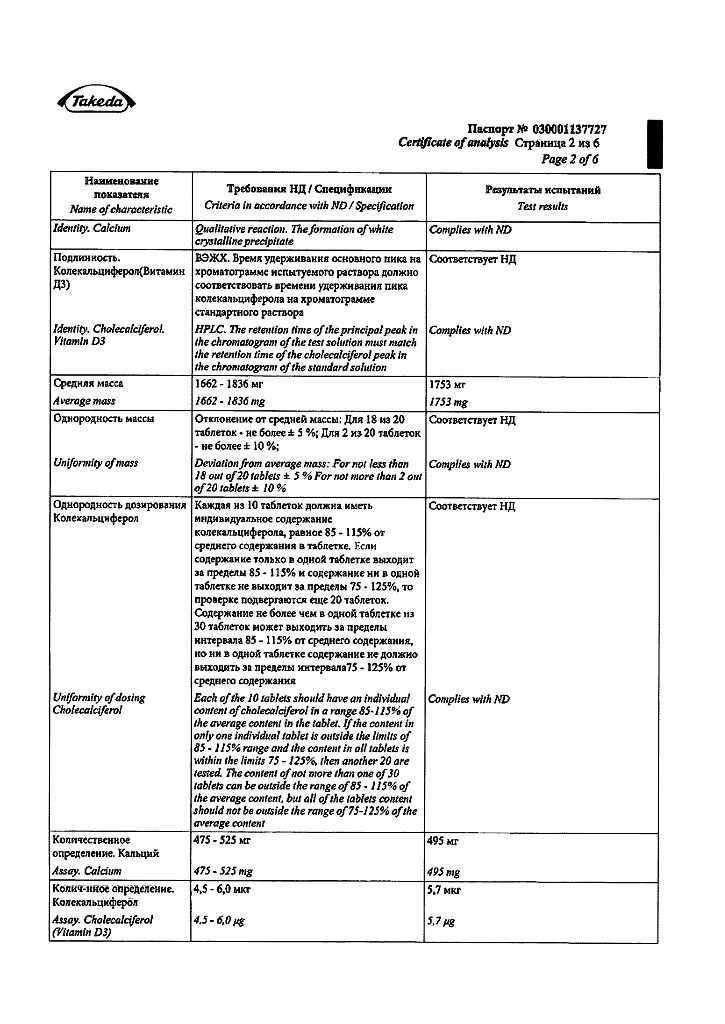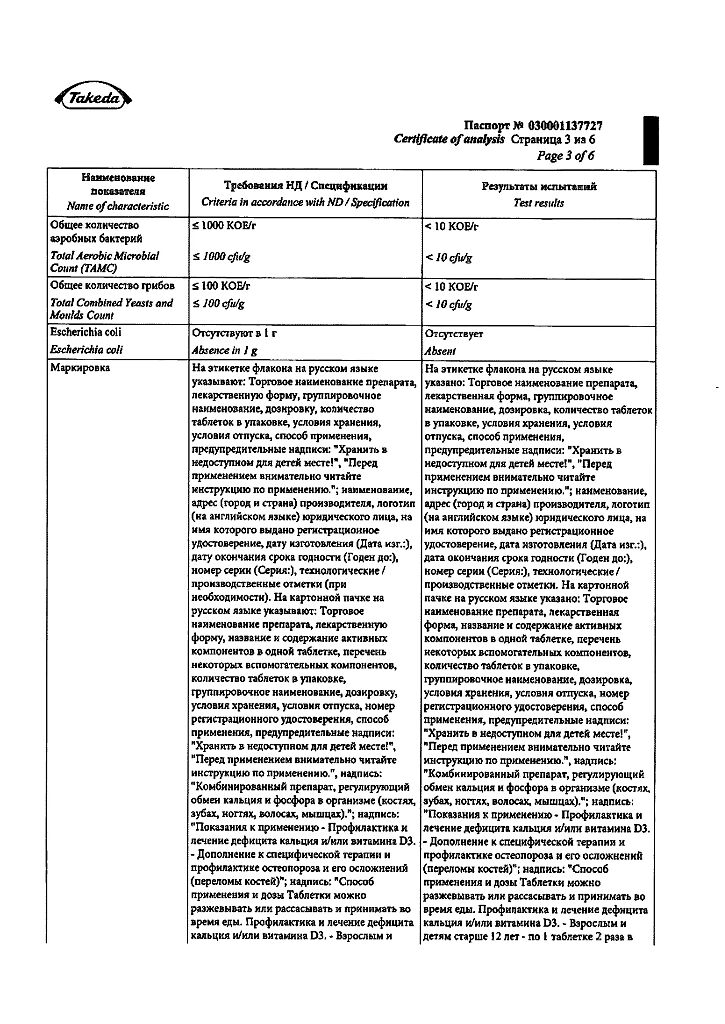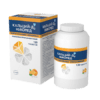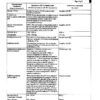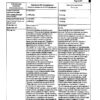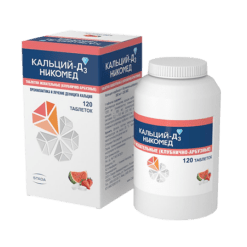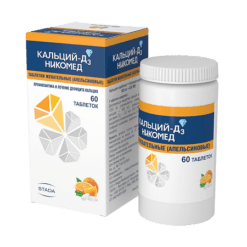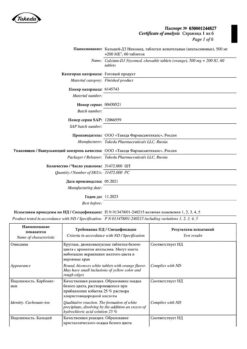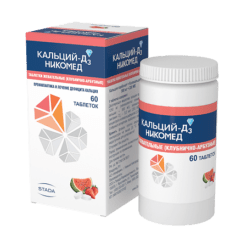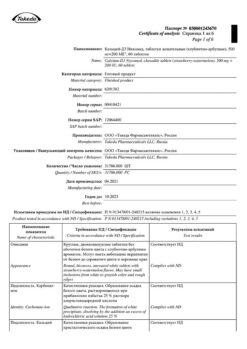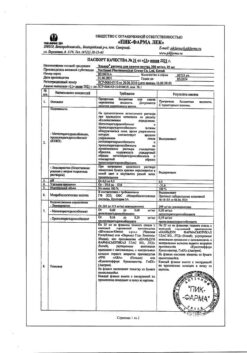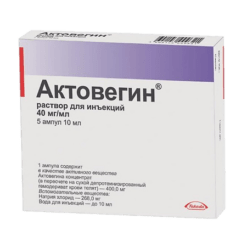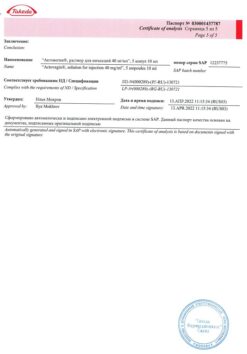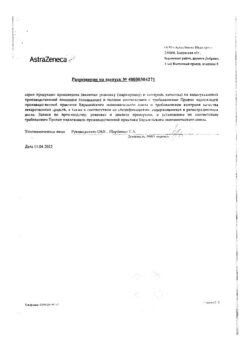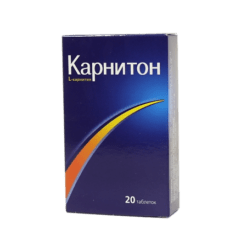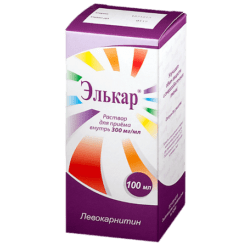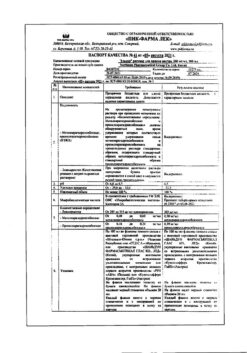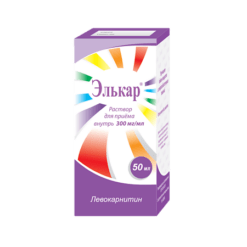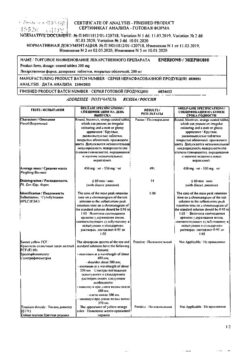No products in the cart.
Calcium-D3 Nicomed Orange, 120 pcs.
€19.49 €16.24
Description
Combined medicine regulating calcium and phosphorus exchange in the body (bones, teeth, nails, hair, muscles). It reduces resorption (resorption) and increases bone density, compensating the lack of calcium and vitamin D3 in the body.
Calcium is necessary for mineralization of teeth. The adequate intake of calcium is especially important during growth period, pregnancy and lactation.
Vitamin D3 increases calcium absorption in the intestine.
The use of calcium and vitamin D3 prevents the increased production of parathyroid hormone, which is a stimulator of increased bone resorption (calcium leaching from bones).
Indications
Indications
Prevention and treatment of calcium and/or vitamin D3 deficiency;
Prevention and complex therapy of osteoporosis and its complications (bone fractures).
Pharmacological effect
Pharmacological effect
A combined drug that regulates the exchange of calcium and phosphorus in the body (in bones, teeth, nails, hair, muscles). Reduces resorption (resorption) and increases bone density, replenishing the lack of calcium and vitamin D3 in the body, necessary for the mineralization of teeth.
Calcium is involved in the regulation of nerve conduction, muscle contractions and is a component of the blood coagulation system. Adequate calcium intake is especially important during growth, pregnancy and lactation.
Vitamin D3 increases calcium absorption in the intestines.
The use of calcium and vitamin D3 prevents an increase in the production of parathyroid hormone, which is a stimulator of increased bone resorption (leaching of calcium from the bones).
Special instructions
Special instructions
During long-term therapy, serum calcium and creatinine levels should be monitored.
Monitoring is especially important in elderly patients during concomitant treatment with cardiac glycosides and diuretics and in patients with an increased tendency to form kidney stones. In cases of hypercalcemia or signs of renal impairment, reduce the dose or discontinue treatment.
Vitamin D should be taken with caution in patients with renal failure. In this case, it is necessary to monitor the calcium and phosphate levels in the blood serum. The risk of soft tissue calcification must also be considered.
To avoid overdose, additional vitamin D intake from other sources must be taken into account.
Calcium and vitamin D3 should be used with caution in immobilized patients with osteoporosis due to the risk of hypercalcemia.
Concomitant use with tetracycline or quinolone antibiotics is usually not recommended or should be done with caution.
Impact on the ability to drive vehicles and operate machinery
The drug does not affect the ability to drive vehicles or operate complex machinery.
Active ingredient
Active ingredient
Calcium carbonate, Colecalciferol
Composition
Composition
Calcium carbonate – 1250 mg (equivalent to elemental calcium – 500 mg)
Colecalciferol (vitamin D3) – 5.0 mcg (200 IU) as colecalciferol concentrate – 2.0 mg
Auxiliary components:
Sorbitol – 390 mg
Orange flavor granulate – 63.0 mg
Povidone – 36.4 mg
Magnesium stearate – 6.00 mg
Aspartame – 1.00 mg.
Pregnancy
Pregnancy
Calcium and vitamin D3 are used during pregnancy to compensate for their deficiency in the body.
During pregnancy, the daily dose of the drug should not exceed 1500 mg of calcium and 600 IU of vitamin D3.
Hypercalcemia due to overdose during pregnancy may have adverse effects on the developing fetus.
The drug is used during lactation.
Calcium and vitamin D3 can pass into breast milk, so mother and baby’s intake of calcium and vitamin D from other sources must be considered.
Contraindications
Contraindications
Hypercalcemia;
Hypercalciuria;
Nephrolithiasis;
Hypervitaminosis D;
Severe renal failure;
Active form of tuberculosis;
Sarcoidosis;
Hypersensitivity to the components of the drug, soy or peanuts.
The drug in tablet form is not used in children under 3 years of age.
The drug contains aspartame, which is transformed into phenylalanine in the body, so the drug should not be taken if you have phenylketonuria.
The drug contains sorbitol, isomalt and sucrose, so its use is not recommended for patients with hereditary fructose intolerance, glucose-galactose malabsorption or sucrase-isomaltase deficiency.
With caution: pregnancy, lactation, renal failure.
Side Effects
Side Effects
The frequency of side effects of the drug is assessed as follows:
very common (>1/10);
frequent (>1/100, <1/10);
uncommon (>1/1000, <1/100);
rare (>1/10,000, <1/1000);
very rare (< 1/10,000).
Metabolism and nutrition: uncommon - hypercalcemia, hypercalciuria.From the digestive system: rarely – constipation, flatulence, nausea, abdominal pain, diarrhea, dyspepsia.From the skin and subcutaneous tissue: very rarely – itching, rash, urticaria.
Interaction
Interaction
Hypercalcemia may potentiate the toxic effects of cardiac glycosides when used simultaneously with calcium and vitamin D preparations. Monitoring of ECG and serum calcium levels is necessary.
Calcium supplements may reduce the absorption of tetracyclines from the gastrointestinal tract. Therefore, tetracycline drugs should be taken at least 2 hours before or 4-6 hours after taking the drug.
To prevent decreased absorption of bisphosphonate drugs, it is recommended to take them at least 1 hour before taking Calcium-D3Nycomed.
GCS reduce calcium absorption, so treatment with GCS may require an increase in the dose of Calcium-D3Nycomed.
With simultaneous use of thiazide diuretics, the risk of hypercalcemia increases, because they increase tubular reabsorption of calcium. When thiazide diuretics are used concomitantly, serum calcium levels should be regularly monitored.
Calcium reduces the effectiveness of levothyroxine by reducing its absorption. The period of time between doses of levothyroxine and Calcium-D3Nycomed should be at least 4 hours.
The absorption of quinolone antibiotics is reduced when used simultaneously with calcium supplements. Therefore, quinolone antibiotics should be taken 2 hours before or 6 hours after taking Calcium-D3Nycomed.
Eating foods containing oxalates (sorrel, rhubarb, spinach) and phytin (cereals) reduces calcium absorption, so you should not take Calcium-D3Nycomed within 2 hours after eating sorrel, rhubarb, spinach, and cereals.
Overdose
Overdose
Symptoms:
Manifestations of hypercalcemia are anorexia, thirst, polyuria, muscle weakness, nausea, vomiting, constipation, abdominal pain, fatigue, bone pain, mental disorders, nephrocalcinosis, urolithiasis and, in severe cases, cardiac arrhythmias.
With long-term use of excessive doses (over 2500 mg of calcium) – kidney damage, soft tissue calcification.
If symptoms of overdose are detected, the patient should stop taking calcium and vitamin D, as well as thiazide diuretics and cardiac glycosides, and consult a doctor.
Treatment:
Gastric lavage, replenishment of fluid loss, use of loop diuretics (for example, furosemide), corticosteroids, calcitonin, bisphosphonates. It is necessary to monitor the content of electrolytes in the blood plasma, renal function and diuresis.
In severe cases, measurement of central venous pressure and ECG monitoring are necessary.
Storage conditions
Storage conditions
The drug should be stored in a tightly closed bottle, in a dry place, out of reach of children, at a temperature not exceeding 25°C.
Shelf life
Shelf life
3 years. Do not use after expiration date.
Manufacturer
Manufacturer
Takeda Pharmaceuticals LLC, Russia
Additional information
| Shelf life | 3 years. Do not use after the expiration date. |
|---|---|
| Conditions of storage | The drug should be stored in a tightly closed bottle, in a dry place out of reach of children at a temperature not exceeding 25°C. |
| Manufacturer | Takeda Pharmaceuticals LLC, Russia |
| Medication form | chewable tablets |
| Brand | Takeda Pharmaceuticals LLC |
Other forms…
Related products
Buy Calcium-D3 Nicomed Orange, 120 pcs. with delivery to USA, UK, Europe and over 120 other countries.

